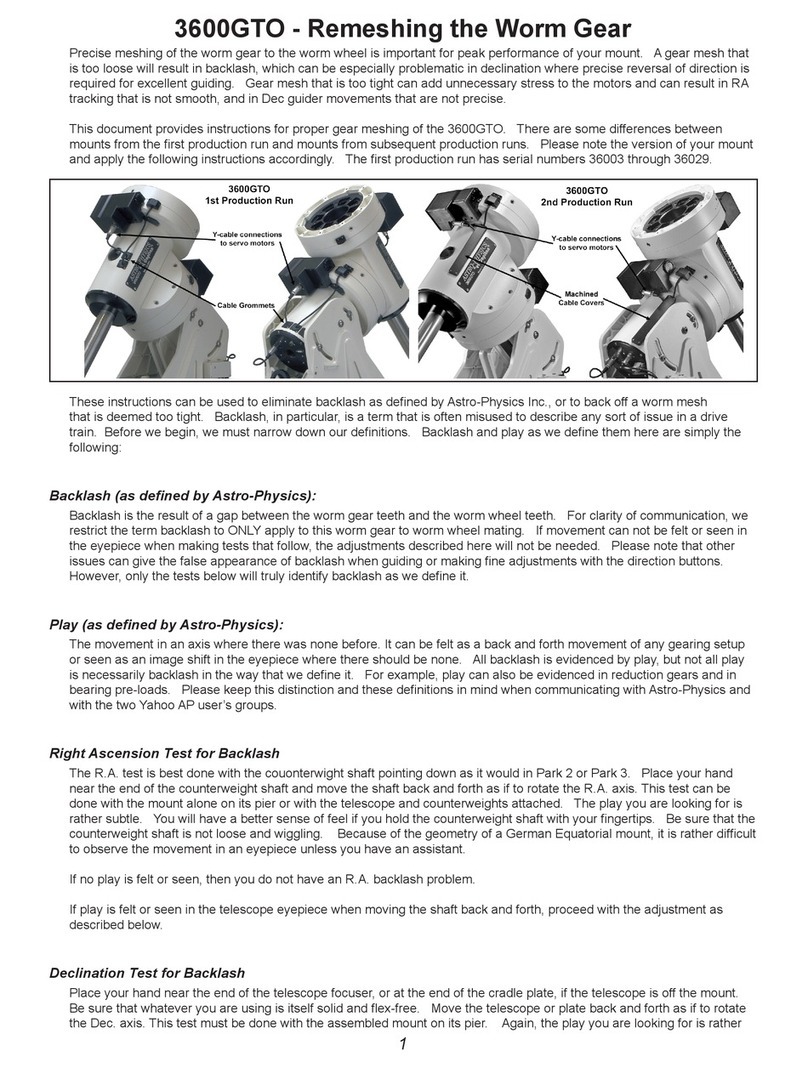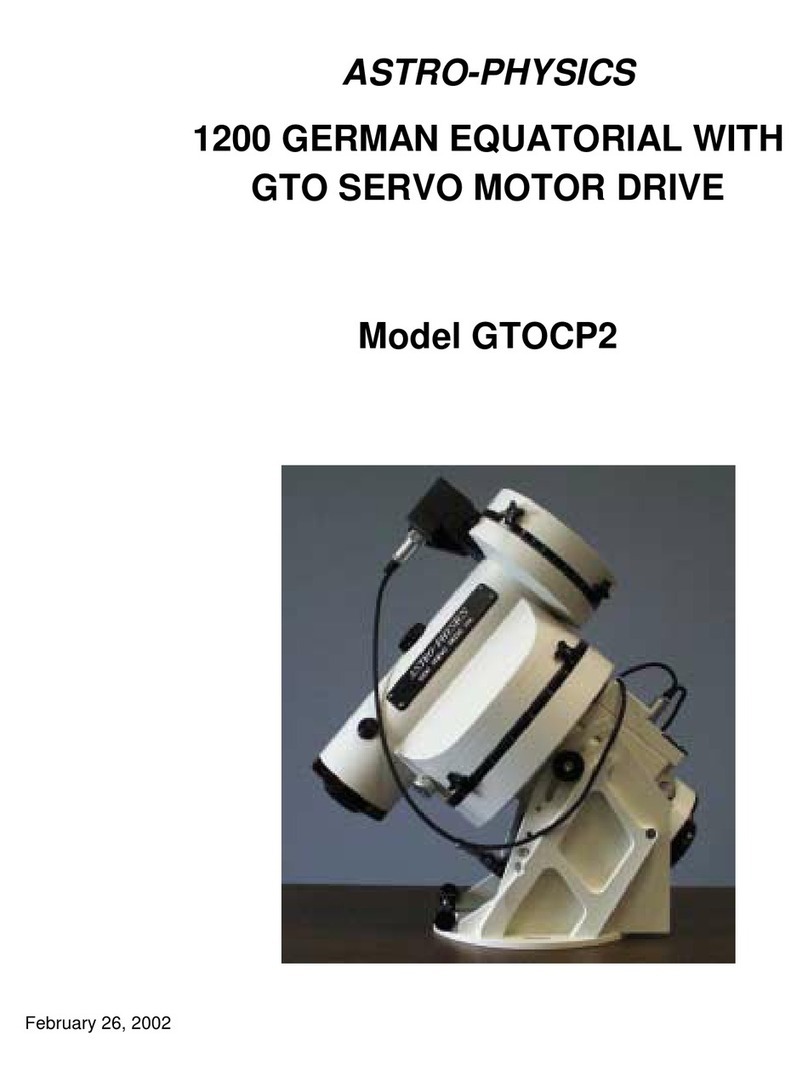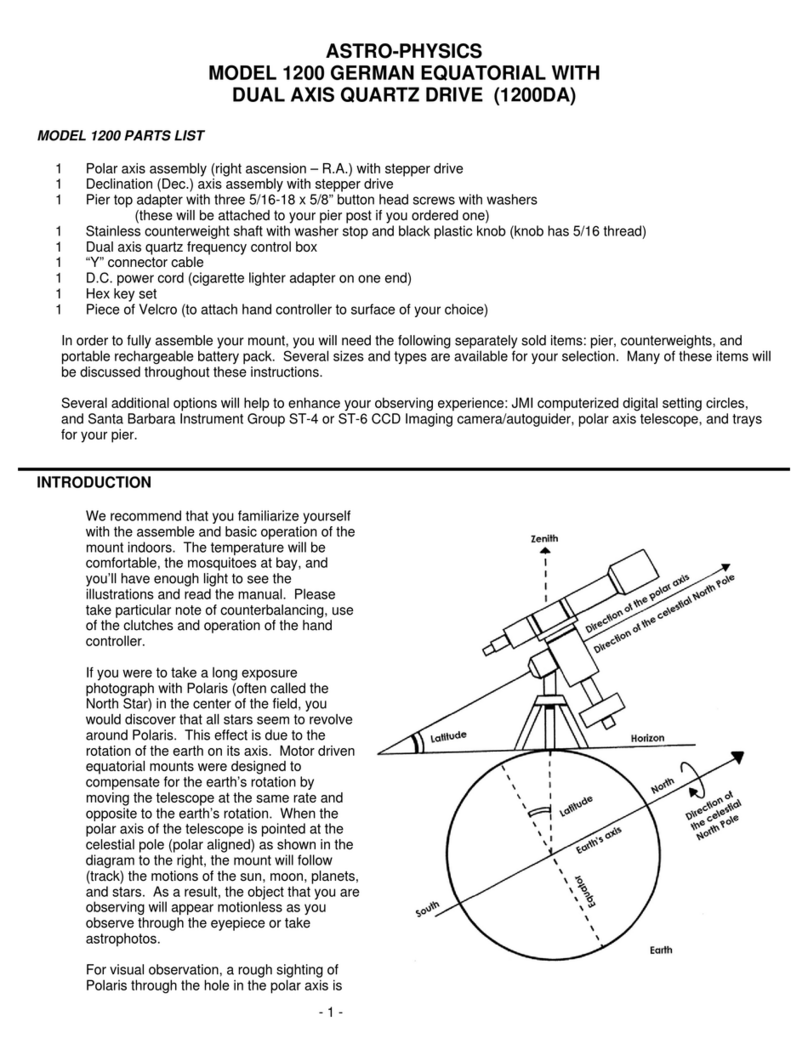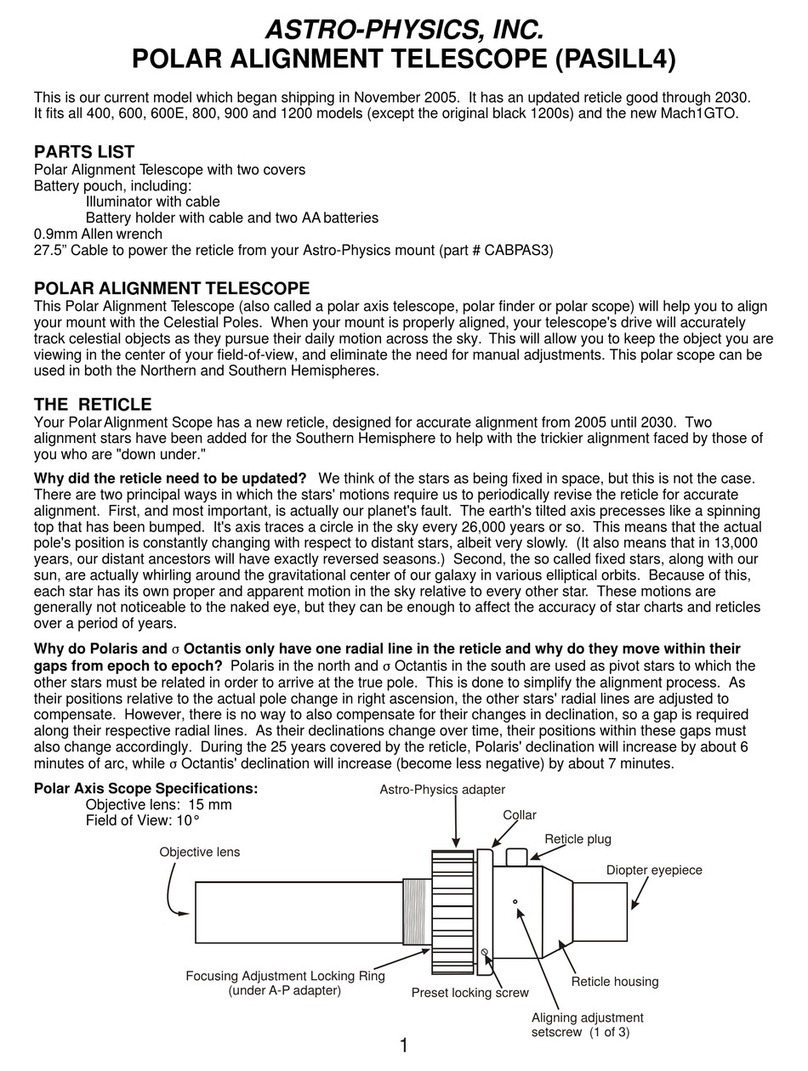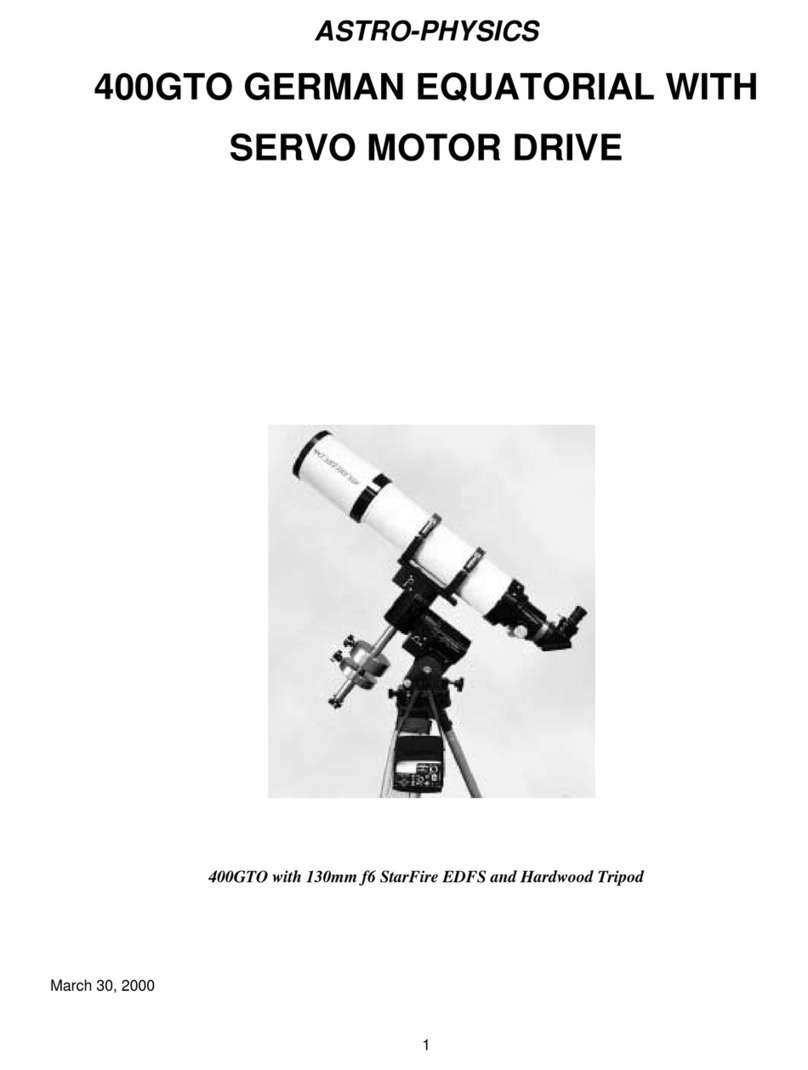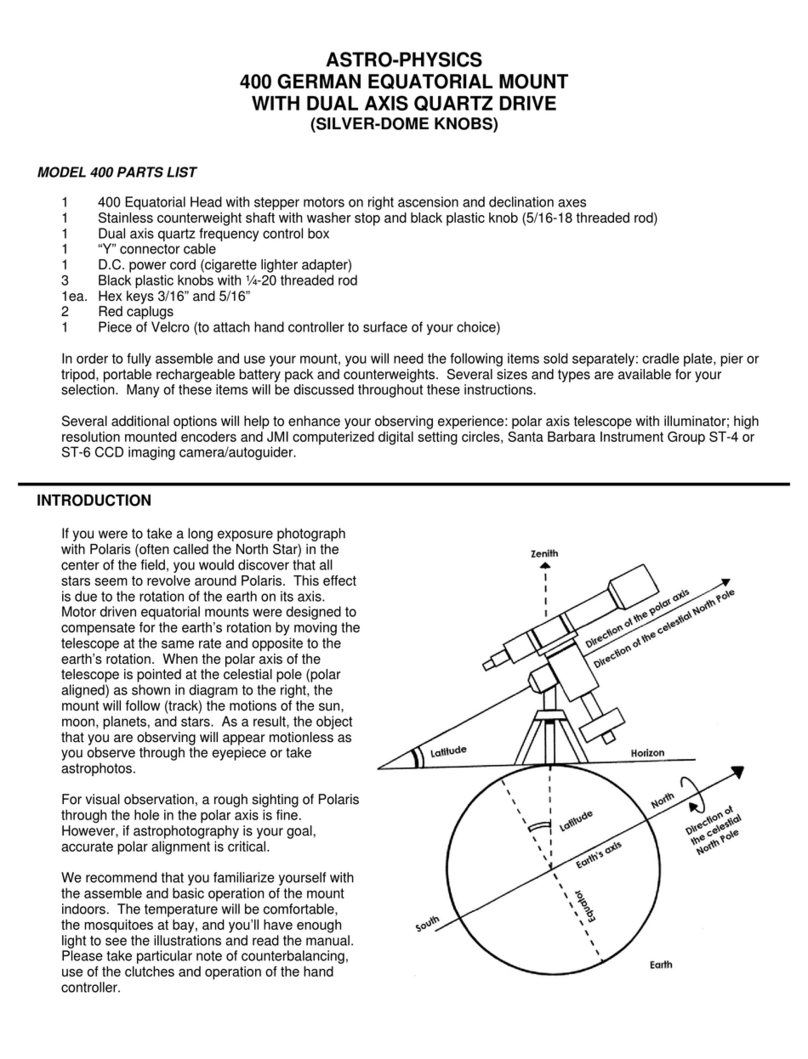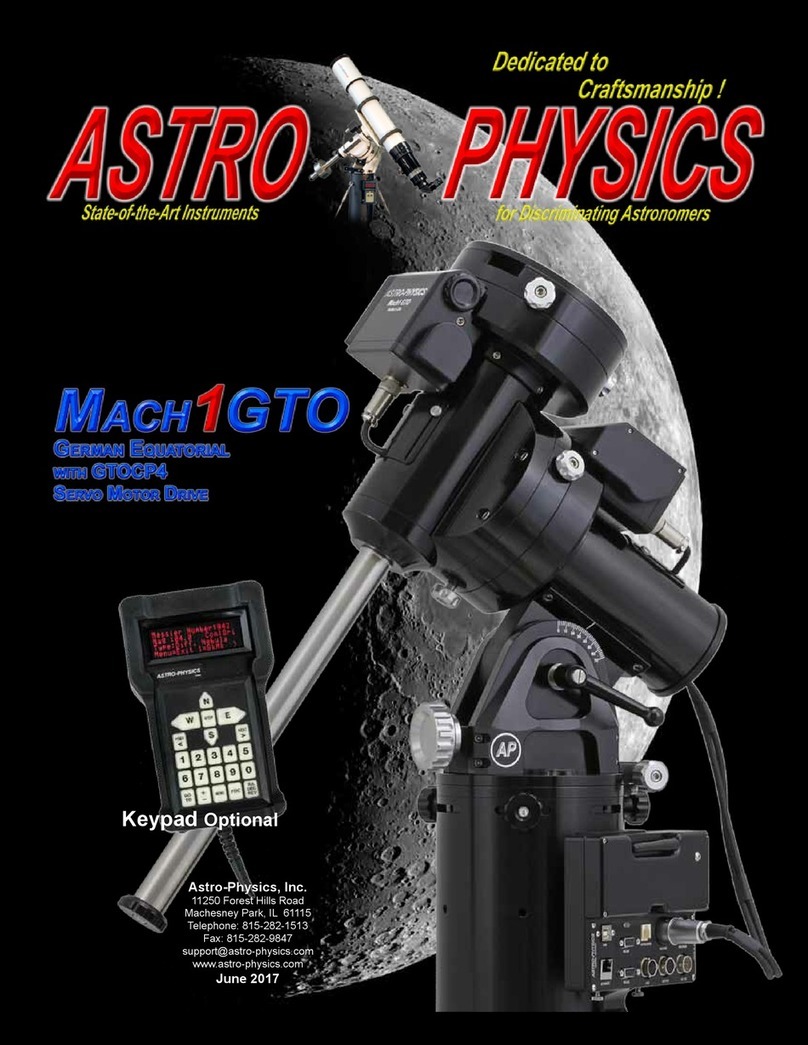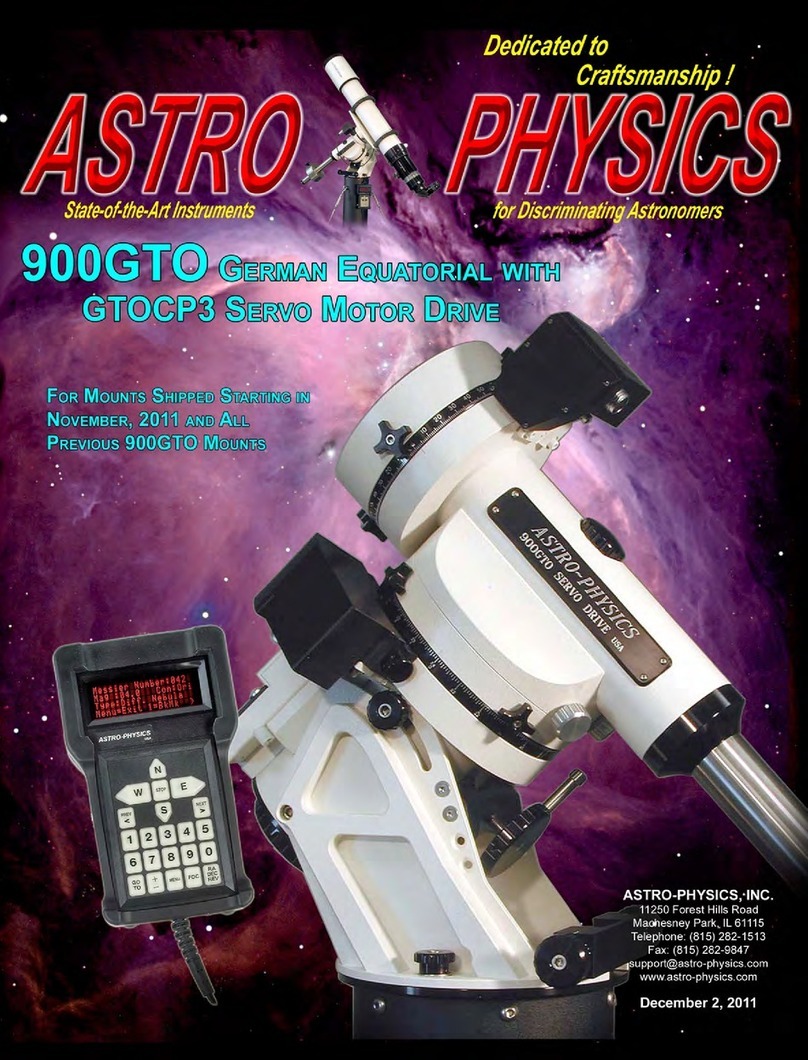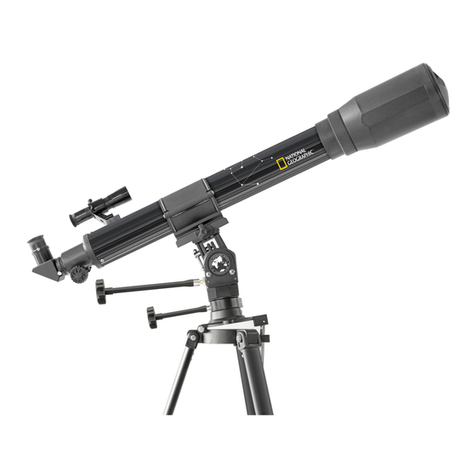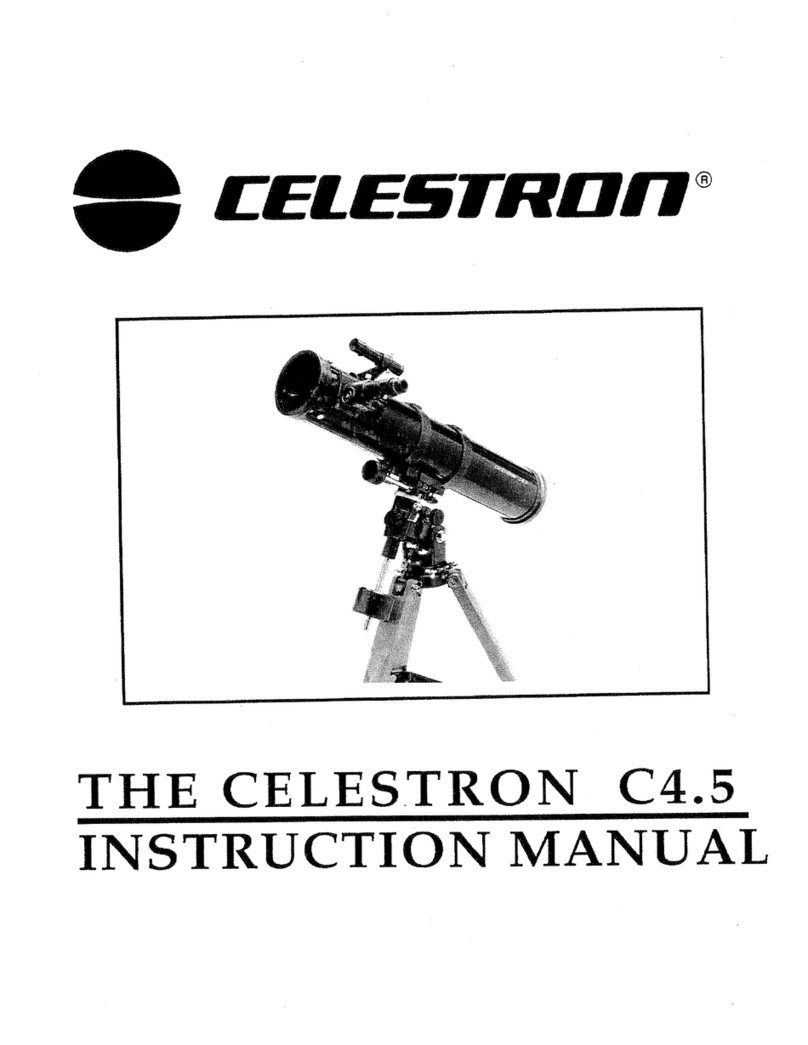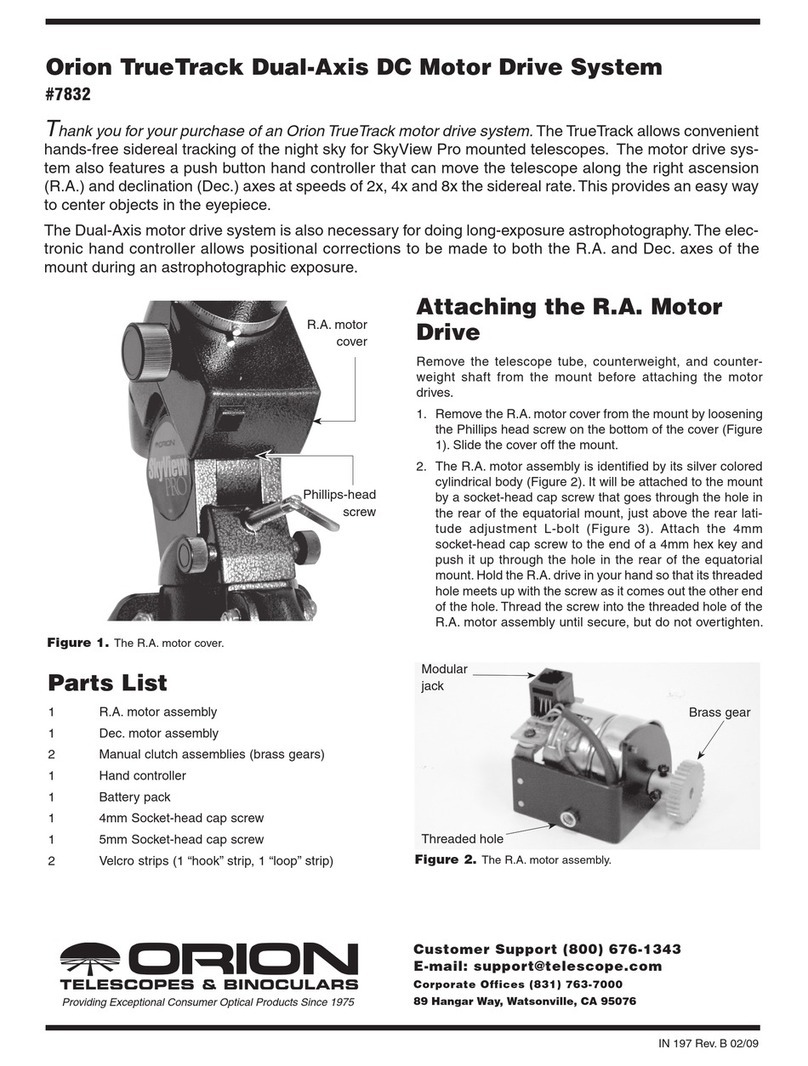
GUIDE RATES: If you wish to engage the fine guiding rates of 1x, 0.5x, and .25x, move the first switch to GUIDE and
the second switch to the 1x, .5x, or .25x position.
DECLINATION BACKLASH CONTROL: When using the 1x, .5x, and .25x guide rates in declination, you may find
that there is a delay when attempting to reverse the motion of the star. Normally declination drift is only in
one direction, and will require correction with only one button. However, occasionally it may be necessary to
reverse the motion. The multiple gear train inside the drive motors takes a considerable number of pulses to
unwind and rewind in the opposite direction. To compensate for this, we have included a circuit that pulses
the motor very rapidly for a moment before continuing at the slower rate. Because the amount of delay varies
with each motor, we have installed a 10-position switch which can be used to dial in the exact amount of
compensation. Starting from the left, engage one switch at a time into the up position until the delay at .25x
guide rate is minimum. If too many switches are engaged, the star will over shoot the desired position.
PERIODIC ERROR MEMORY (PEM): The drive controller contains a very sophisticated periodic error compensation
circuit. Because the majority of the periodic error is due to the worm and is quite predictable, it is possible to
significantly reduce it by simply having the controller “memorize” your button inputs and automatically play
them back for each cycle of the worm. This circuit has some unique features that makes it easy to operate
and almost totally foolproof.
To start the process of recording the periodic error, align your telescope accurately on the pole so that you get
minimum R.A. and Dec. drift. Place a medium brightness star on the crosshair at moderately high power so
you can easily see the R.A. gear drift. Be sure that the night is steady enough with minimum atmospheric
motion and pick a star near the zenith to minimize atmospheric refraction errors. The recording process will
take about 6.5 minutes to complete.
When you are ready to begin, be sure that the star is on the crosshair, and slide the play/record switch into
the “record” mode. The green LED will come on for the 6-minute period, and will extinguish at the end of the
recording period. During this 6.5-minute period it will be necessary to keep the star on the crosshair. Every
button input will be recorded. Avoid trying to guide out any atmospheric scintillation, since this will add a
random noise error into your final guide rate. If an ST4 autoguider is available, it can be used to guide, and
the controller will faithfully remember each error correction that it makes. An autoguider is extremely
accurate, and will place into the memory a very smooth correction of the gear error.
When you wish to play back the recorded corrections, slide the play/record switch into the “play” mode. The
controller will automatically play back the correct portion of the worm error. It is not necessary to place the
rate switches into the same position that they were recorded in. For the smoothest results, however, it is
advised to record and play back in the .25x position. The controller can be slewed in the 8x and 16x mode at
any time without losing track of the periodic error. The playback can also be turned on and off at any time
without losing track of the gear position.
A most valuable feature of this circuit is that it automatically compensates for any drift inadvertently introduced
by the operator in the process of recording the gear error. For instance, if the mount was not properly polar
aligned in altitude, the right ascension drift rate would be in error. The circuitry automatically subtracts this
slow drift from the memory, so that the overall long-term drive rate remains exactly at the King rate. This way
the compensated driving rate will always be correct for any other position in the sky and for any other time
that the mount is set up in the field. When the mount is properly polar aligned, it is possible to take 15 to 30
minute unguided astrophotos without trailed star images. For more critical exposures, the controller memory
allows the astrophotographer to check the guide star only occasionally during a long exposure.
LED KNOBS: There is an LED output available on the 400 Dec. axis motor housing as shown on Diagram 2. You
may insert your LED reticle to this plug. Brightness can then be controlled using the MIN to MAX (minimum to
maximum) setting of the LED knob.
AUTOGUIDER CONNECTION: If you own a Santa Barbara Instrument Group (SBIG) ST-4 or ST-6 Star
Tracker/Imaging system, connect it to the RJ11 phono plug input of the controller via a TIC (Tracking
Interface Cable) produced by SBIG. You may purchase the cable directly from us (our part #CABTIC) or
directly from SBIG. This cable will have a DB15 female connector on one end and an RJ11 plug on the end
that inserts into our controller.
To operate the SBIG ST-7 or ST-8, you will need the ST-7 cable available from SBIG. This is the same cable
that is offered for the Celestron Ultima. It has a DB9 male connector on one end and an RJ11 connector that
inserts into our controller.
